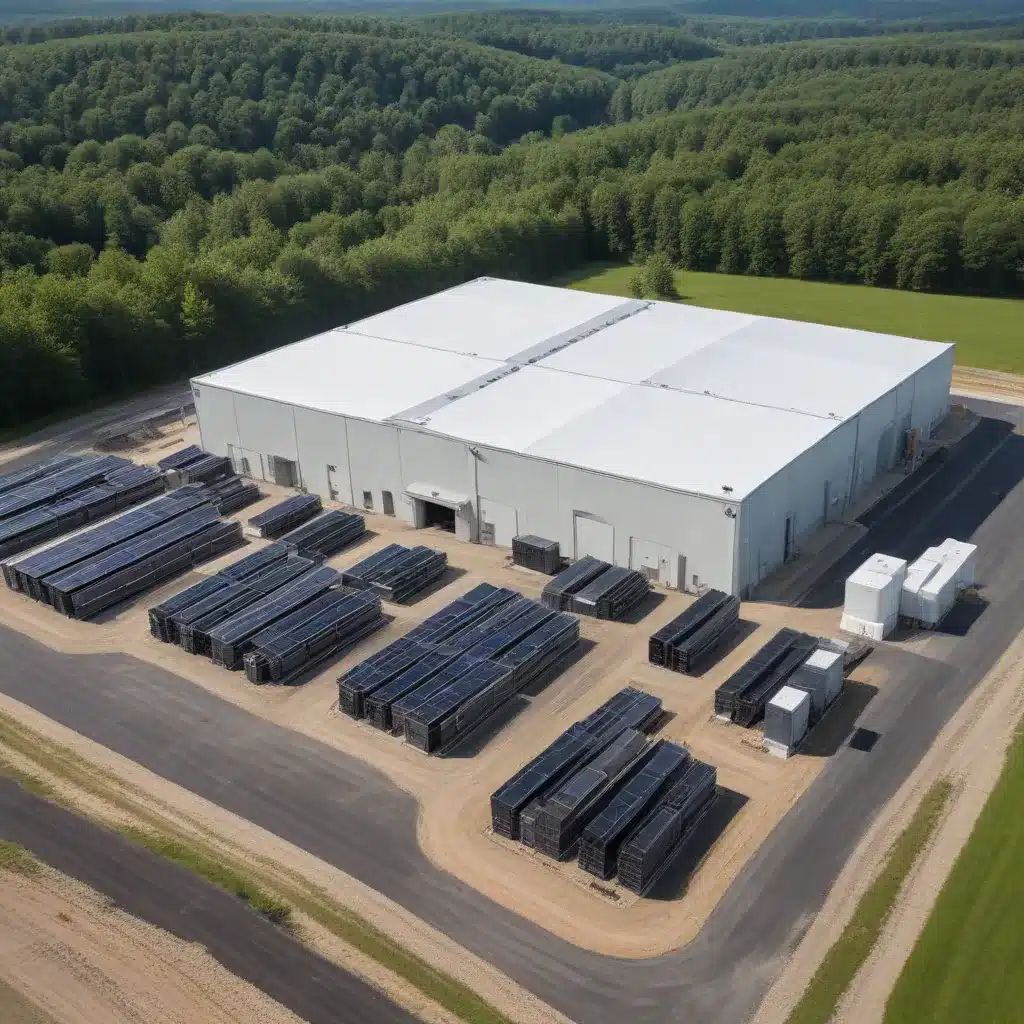
Transforming Abandoned Minelands into Hubs of Sustainability
In the heart of Virginia’s coal country, a group of determined visionaries are reimagining the future, unfazed by the doubters. Will Payne and Will Clear, former Virginia state energy office bureaucrats turned private-sector consultants, have an ambitious plan to repurpose land and backfill local taxes in communities left behind by the coal industry’s decline. Their goal? To pioneer new models for powering data centers with local clean energy sources.
Data Center Ridge, a key component of their nonprofit venture Energy DELTA Lab, aims to transform 65,000 mostly contiguous acres of former mining lands into test sites that advance energy innovation. The project has the backing of Republican Gov. Glenn Youngkin, who announced an agreement last November establishing a framework for developing the land.
“If I had a dollar for every time somebody asked why we’re wasting our time on this, I wouldn’t have to work,” says Clear, a former chief deputy director with the state Department of Energy. “This isn’t a pipedream. What people need to understand is how long a project like this takes.”
Harnessing Underground Mine Water for Cooling
The first phase of their plan involves persuading tech companies to build solar-powered data centers on up to 2,000 acres of the now-defunct Bullitt Mine in Wise County. The facilities would be able to tap into underground mine water to help cool their servers. Eventually, Payne and Clear envision adding other energy sources such as wind turbines, pumped hydro storage, or small nuclear reactors across the larger property.
“This is a big idea and we need someone who can share that vision,” says Payne, managing partner of Coalfield Strategies LLC. “We need developers who believe in ramped-up clean energy.”
Glenn Davis, director of the Virginia Department of Energy, sees several key factors driving the state’s interest in the Energy DELTA Lab. Many data center companies are exclusively seeking sites where they can access 100% clean energy, and new clean power generation could cushion the grid impact from the state’s booming data center sector.
“Southwest Virginia was the energy capital of the East Coast and I believe it will be again,” Davis says. “There’s a power void that needs to be filled and solar is part of that.”
Incentivizing Data Center Development
To attract data center developers, the Energy DELTA Lab recently collaborated with a local industrial facilities authority to offer a financial incentive. It translates to Wise, Lee, Scott, and Dickenson counties and the city of Norton offering a tax rate on data center equipment of just 24 cents per $100 of assessed value – the lowest such rate in the state.
“The more persuasive argument for data centers here is about sustainability for local governments and their citizens,” Clear explains. “This creates a new trajectory for tax collections for the next 50 years.”
The sites they’re eyeing for data centers are atop an estimated 6 billion to 10 billion gallons of underground 55-degree mine water, which offers a less-costly method for cooling the hot air generated by hundreds of servers. Payne and Clear have been collaborating with engineers to devise a closed-loop water system that could chill the centers and eventually pump the water back underground to be reused after the Earth removes the heat it absorbed.
Overcoming Grid and Broadband Challenges
One of the looming challenges is securing the flow of electricity to and from Data Center Ridge. Even if on-site solar arrays with backup battery storage are the initial power source, the project needs sufficient substations, transmission lines, and other infrastructure to tie into the grid. That way, excess electricity can be shipped out and “imported” electrons can fill any deficits.
Payne and Clear are in discussions with Kentucky Utilities – which does business in Wise and four other Virginia counties as Old Dominion Power – about upgrading and adding infrastructure. Davis says his agency would likely pursue federal Energy Department money to construct transmission infrastructure.
Broadband access is another hurdle, as reliable high-speed internet is essential for modern data centers. Payne and Clear know it will take years, not months, to resolve grid and broadband issues, but they remain undaunted.
“In Southwest Virginia, we’ve seen plenty of manufacturers pick up and leave, and that wouldn’t be the case with wind turbines and data centers,” Clear says.
Overcoming Preconceptions about Appalachia
Despite the technical challenges, Payne and Clear say the greatest obstacle is overcoming outsiders’ preconceptions about Appalachia. “Even after making our case since 2019, dispelling myths about the region is our first challenge in getting developers down here,” Payne laments. “They think everybody is on meth and lives in shanties.”
However, the entrepreneurs are determined to prove their doubters wrong. “Everything is teed up here to be executed,” Clear says. “It’s getting that first domino to drop that’s really important.”
With the backing of state leadership, innovative financing, and a vision for sustainable development, Payne and Clear are positioning Southwest Virginia to become a hub of clean-energy data centers. By transforming abandoned minelands into hubs of innovation, they aim to create a new economic trajectory for a region long reliant on the declining coal industry.
As the project unfolds, the Joint Action for Water community will closely follow the progress and lessons learned in this ambitious endeavor to revitalize Virginia’s coal country through clean energy and data center development. To stay updated on this and other important water and sanitation initiatives, visit our website and subscribe to our newsletter.

